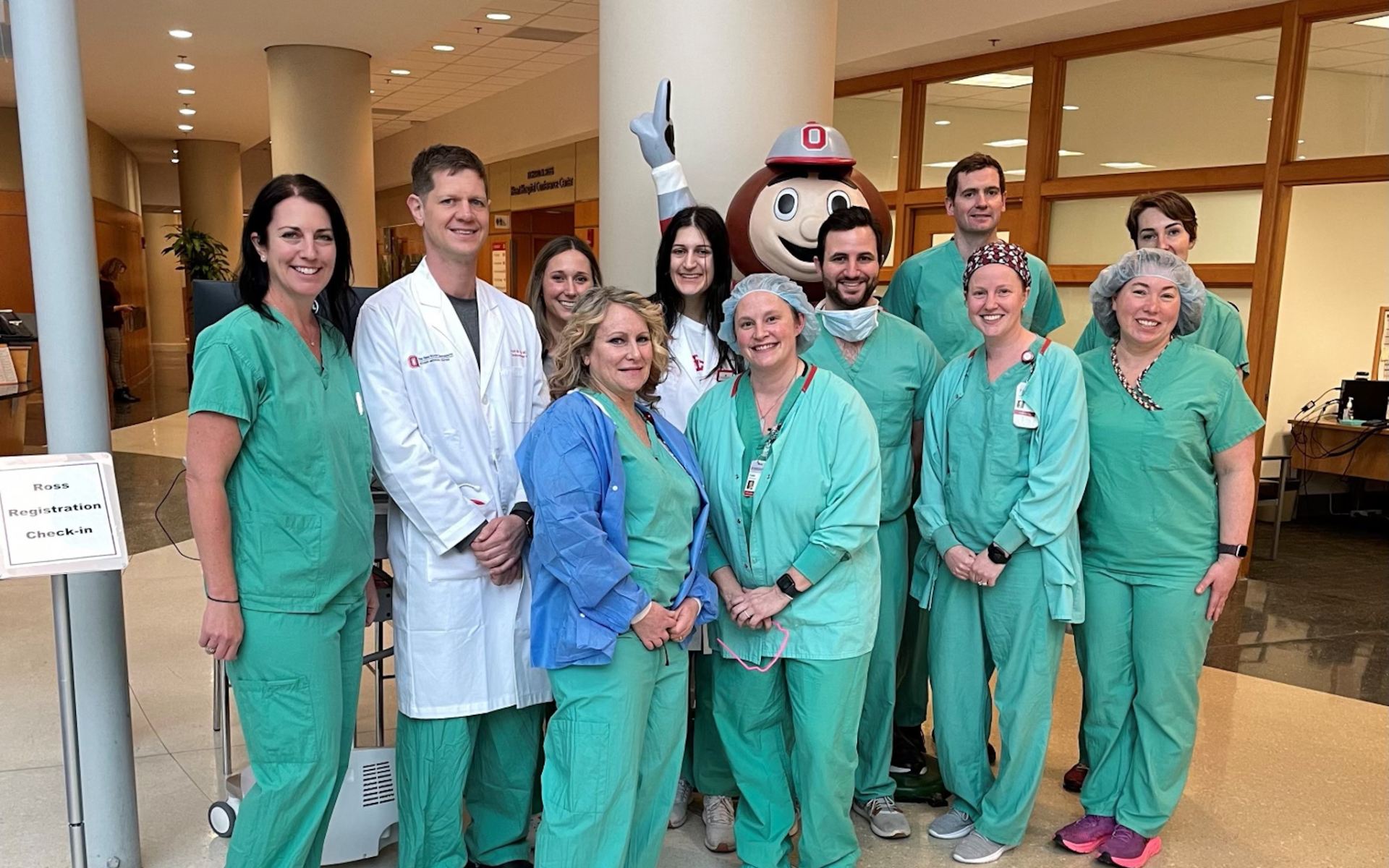
The surgical team that implemented the FIRE1 device, which tracks patients’ fluid levels. Credit: Ohio State Wexner Medical Center
Patients at the Ohio State Wexner Medical Center are the first in the state to participate in a clinical trial for an innovative sensor that effectively tracks patients’ fluid levels, which can assist in catching heart failure.
Fluid retention is one of the early signs of heart failure, where the heart is unable to pump enough blood to meet the body’s needs for blood and oxygen. Fluid or water retention occurs when the body can’t maintain proper fluid levels and may cause areas of the body to swell as they fill with water, according to Medical Center News Today.
Whereas the process of fluid retention is either imperceptible or fatal, the device used in the clinical trials allows doctors to intervene early rather than waiting until a patient has symptoms before going to the hospital, Dr. Rami Kahwash, professor of cardiology and director of the heart and vascular research organization, said.
Patients will retain fluid that causes leg swelling, abdominal fullness and shortness of breath, Kahwash said.
“This really gives us an idea about how those high-risk patients are doing on a chronic basis without coming to the hospital,” Kahwash said.
About 6.2 million adults in the U.S. have heart failure, according to the Centers for Disease Control and Prevention.
According to Wexner Medical Center, the FIRE1 device was implanted for the first time at the hospital on Jan. 18 in Wes Vollrath, 72, who began retaining fluid more than a year ago, leading to a heart attack.
“This sensor is basically a device that can be implanted inside the major vein in the body, which is the inferior vena cava,” Kahwash said.
The inferior vena cava is the major vein that drains deoxygenated blood from the lower part of the body up to the heart. When patients retain fluid, the size of this vein enlarges and the device that sits inside the vein can detect that.
“I have to strap a belt on me and I got a computer to take a reading once a day and have it sent away,” Vollrath said. “But it only takes a couple of minutes to do that, it’s no big deal.”
The data on fluid volume can be viewed by clinicians at Ohio State’s heart failure clinic, Kahwash said.
Vollrath said he is satisfied with the device and that it has helped keep him out of the hospital.
The way heart failure was previously monitored included watching the patient’s weight, but it is not a guaranteed indicator, Kahwash said. According to the American Heart Association, weight gain may also be due to fluid retention, which would be more precisely monitored by the FIRE1 device.
Kahwash said the device is still in the experimental phase, with just one implanted so far. They’re hoping to enter the pivotal clinical trial phase, which will allow the device to be approved by the FDA and would entail more patients involved to understand the efficacy of the sensors.


